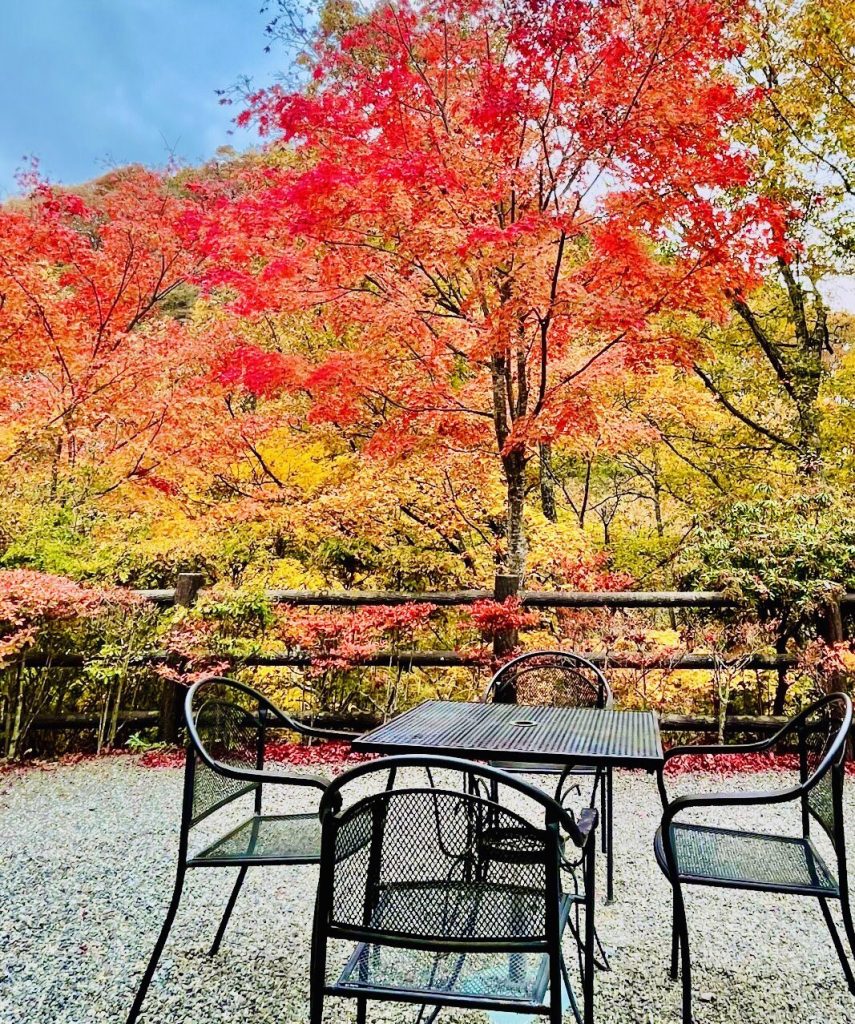
Today is the beginning of winter, or 立冬(Ritto). According to the calendar, autumn spanned from August 8th, ‘Risshu,’ until yesterday. This year, ‘Ritto’ starts on November 8th and lasts until November 22nd. The first 侯(Koh), 山茶始開 (Tsubaki hajimaru: camellia begins to bloom), is from November 8 to 12. This means the time when the bright red sasanqua flowers begin to bloom in the winter-dead landscape. 山茶 is pronounced tsubaki and refers to the sazanka flower. The second 侯, 地始凍 (Chi hajimete kohru: the earth begins to freeze), is from November 13 to 17. This means that the ground is beginning to freeze in the cold winter air. Frost may fall in the morning, and icicles may form in some places. The third 侯, 盞金香 (Kinsenka saku: narcissuses blooms), is from November 18 to 22. This means that the narcissuses flower is beginning to bloom. 盞金香 does not refer to the fragrant calendula, but rather to the narcissuses. After 立冬, the next 節気 is 小雪 (Shosetsu: light snow), which begins on November 23. The Japanese calendar divides the four seasons into six 節気 each, and further subdivides each 節気 into three 侯 to accurately represent the changing seasons. However, in recent years, climate change has caused a significant gap between the calendar and reality.
今日から立冬。8月8日(火)の「立秋」から昨日までが 暦の上では秋でした。今年の立冬は今日11月8日から11月22日までです。初侯「山茶始開(つばきはじめてひらく)」は11月8日〜12日で、冬枯れの景色の中で真っ赤な山茶花が咲き始める頃という意味です。「山茶」はつばきと読み、山茶花のことです。次候「地始凍(ちはじめてこおる)」は13日〜17日で、冬の冷気のなかで大地が凍りはじめる頃と言う意味です。朝は霜が降り、霜柱が立つ所もあります。末候「盞金香(んせんかさく)」は18日〜22日で、水仙の花が咲きはじめる頃と言う意味です。「盞金香」は香ばしい金盞花ではなく、水仙を意味します。こうして立冬が過ぎると、11月23日から小雪(しょうせつ)になります。この様に日本の暦は四季をそろぞれ六つに分けて二十四節気とし、更に一節気を三つの侯に分けて四季折々を的確に表してきました。しかし、近年の気候変動の影響で暦と現実の間に大きなズレが生じてきています。
